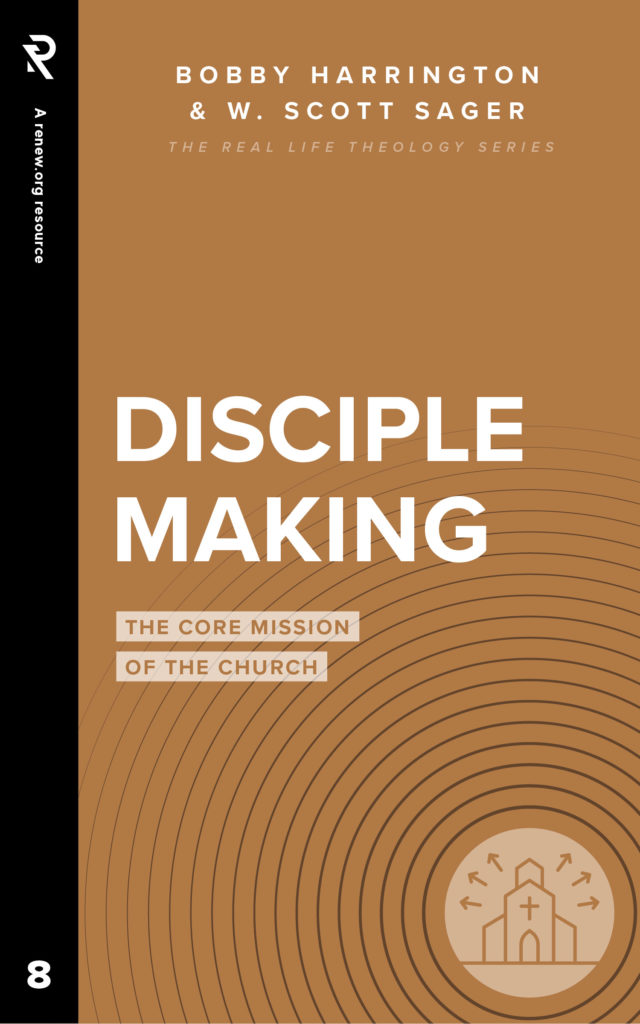
My Favorite Paragraph of Disciple Making: The Core Mission of the Church
Buried deep within my house is a treasure chest. By “deep,” I mean it’s in my office in the basement. By “treasure chest,” I mean exactly what it sounds like: it’s an antique, wooden treasure chest, maybe 10 inches long and 8 inches high. And what’s inside is a literal treasure.
I feel safe putting this information out there because there’s nothing in the treasure chest that would be worth stealing. It’s just little squares of paper with writing on them. But it’s treasure nonetheless. At my going away party at the church I used to serve as associate minister, some of our church friends wrote messages telling me various ways that I had helped them. They dropped the messages in the treasure chest and sent it with us to remember them by.
When I see that treasure chest, I am reminded of one of life’s most urgent lessons: The real treasure in this life is the people whom you help along toward the next life.
Because people are the point, I am increasingly drawn toward the concept of “intentional relational transformation.”
In their new book, Disciple Making: The Core Mission of the Church, Bobby Harrington and Scott Sager introduce “intentional relational transformation” by pointing us to the Shema of the Old Testament (“Hear O Israel: The Lord our God, the Lord is one. Love the Lord your God…,” Deut. 6:4-5). This section of Scripture follows up this all-important command with how to pass it on to your kids: “Impress them on your children. Talk about them when you sit at home and when you walk along the road…” (Deut. 6:7).
Bobby and Scott show how helping our kids toward heaven is a matter of intentional (“from the time they ‘get up,’ until the time they ‘lie down’ each day”), relational (“parents constantly use the relational conversations and discussions that come up in life”) transformation (“they become disciples who leave their homes to establish families of their own…repeating the model generation after generation”).[1]
Intentional relational transformation is an excellent three-word summary of what Bobby and Scott mean by “disciple making” in their new book.
They show how intentional relational transformation is a methodological thread throughout the Bible—from the Shema’s method of discipling your children to Jesus’ method of training His disciples, to the apostle Paul’s “Follow my example, as I follow the example of Christ” (1 Cor. 11:1).
Do you want to do something eternally significant with the time you’ve been given? Then whether your context is coworkers or kids, you too will be compelled to restructure your calendar and conversations around intentional relational transformation. Jesus’ command to make disciples is an invitation to a legacy that lasts into eternity. Bobby and Scott’s beautiful description of this legacy is my favorite paragraph of Disciple Making. As you read this paragraph, ask yourself what is most worth treasuring in this life you’ve been given:
May God grant you a legacy of joining the long line of disciple makers. The line of disciples-who-make-disciples curves its way through every culture and every age, connecting us to the great reformers, church fathers, apostles, and even to Jesus himself. Our desire for you—when you close your eyes at the end of your life and reflect upon what your life has been all about—is that you will think of the people you have discipled to become Jesus-followers. You will feel the same way Paul felt about those he discipled: “For what is our hope, our joy, or the crown in which we will glory in the presence of our Lord Jesus when he comes? Is it not you? Indeed, you are our glory and joy” (1 Thessalonians 2:19-20).[2]
[1] Bobby Harrington and Scott Sager, Disciple Making: The Core Mission of the Church (Renew.org, 2021), 19-20.
[2] Harrington and Sager, 98-99.









